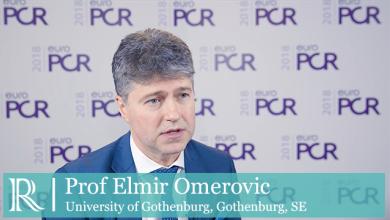Search results
Author(s):
Jason M Tarkin
,
Juan Carlos Kaski
Added:
3 years ago
Stable angina pectoris is the most prevalent clinical manifestation of coronary heart disease. While the overall prognosis in patients with stable angina is good, with a low yearly event rate of ~1–2 %,1 for many, adequate symptom control can be difficult to achieve, leading to significantly impaired quality of life.
The traditional approach to the pharmacological management of stable angina, as…
View more
Author(s):
Marie Mide Michelsen
,
Naja Dam Mygind
,
Daria Frestad
,
et al
Added:
3 years ago
Women have for many years been regarded as being at relatively low risk for the development of ischaemic heart disease (IHD).1,2 Recently this pattern has changed and cardiovascular disease (CVD) is now the leading cause of death for women in Europe.3,4 Under the age of 60 years acute coronary syndrome occurs 3–4 times more often in men; however, after the age of 75 years women represent the…
View more
Management of Stable Angina
Author(s):
Udho Thadani
Added:
3 years ago
Article
EuroPCR 2018: SCAAR
Author(s):
Elmir Omerovic
Added:
5 years ago
Video
Author(s):
Philip A Poole-Wilson
Added:
3 years ago
Angina pectoris is a symptom that is usually, in the developed world, caused by obstruction to the coronary arteries by the enlargement of atheromatous lesions; there are other causes. The symptom can limit lifestyle, but more importantly is a repetitive reminder to the patient of the presence of heart disease, causing continual anxiety because of the belief that angina is the portent of early…
View more
Author(s):
Philip A Poole-Wilson
Added:
3 years ago
Angina pectoris is a symptom that is usually, in the developed world, caused by obstruction to the coronary arteries by the enlargement of atheromatous lesions; there are other causes. The symptom can limit lifestyle, but more importantly is a repetitive reminder to the patient of the presence of heart disease, causing continual anxiety because of the belief that angina is the portent of early…
View more
Author(s):
Edwin E Ferguson
Added:
3 years ago
Cardiac rehabilitation (CR) refers to coordinated multifaceted interventions designed to optimize a cardiac patient's physical, social, and psychological functioning, with the additional goals of stabilizing, slowing, or even reversing the progression of the underlying atherosclerotic processes, thereby reducing morbidity and mortality. CR is a comprehensive secondary prevention program that…
View more
Author(s):
Edwin E Ferguson
Added:
3 years ago
Cardiac rehabilitation (CR) refers to coordinated multifaceted interventions designed to optimize a cardiac patient's physical, social, and psychological functioning, with the additional goals of stabilizing, slowing, or even reversing the progression of the underlying atherosclerotic processes, thereby reducing morbidity and mortality.1CR is a comprehensive secondary prevention program that…
View more
Stable Angina Medical Therapy
Author(s):
Talla A Rousan
,
Udho Thadani
Added:
3 years ago
Article
Added:
3 years ago
Rome, Italy 30 August 2016:New generation drug eluting stents (new DES) did not outshine contemporary bare metal stents (BMS) as they were expected to, in a surprise finding of the largest randomized stent trial to date.
The Norwegian Coronary Stent Trial (NorStent), presented at ESC Congress 2016, “demonstrates that the efficacy of new DES versus contemporary BMS is lower than expected,” noted…
View more











